
The Christian cross is the ideal logo. The form is easily constructed, quickly assembled from readily available, generally mundane natural or manufactured materials. It is economical and efficient, immediately recognizable. It is fittingly designed to catch the eye, in part because it is so close a proxy for the human body.
Take a simple vertical element, marking out a heavenward path of ascent. Meet it, a bit above its center, with the midpoint of a somewhat shorter horizontal element, rhyming the lay of the land beneath. Two intersecting trajectories join earth and sky. In this particular Christian guise, initially, and always thereafter, this shape reiterates an instrument of torture and execution—but one simultaneously transformed into a harbinger of ultimate victory. The cross immediately signals “Christian” while also sustaining a related array of various particular meanings depending upon its location, specific material and spatial capacities (like size, medium, decoration, and number), and whether it stands alone or as part of a larger ensemble.
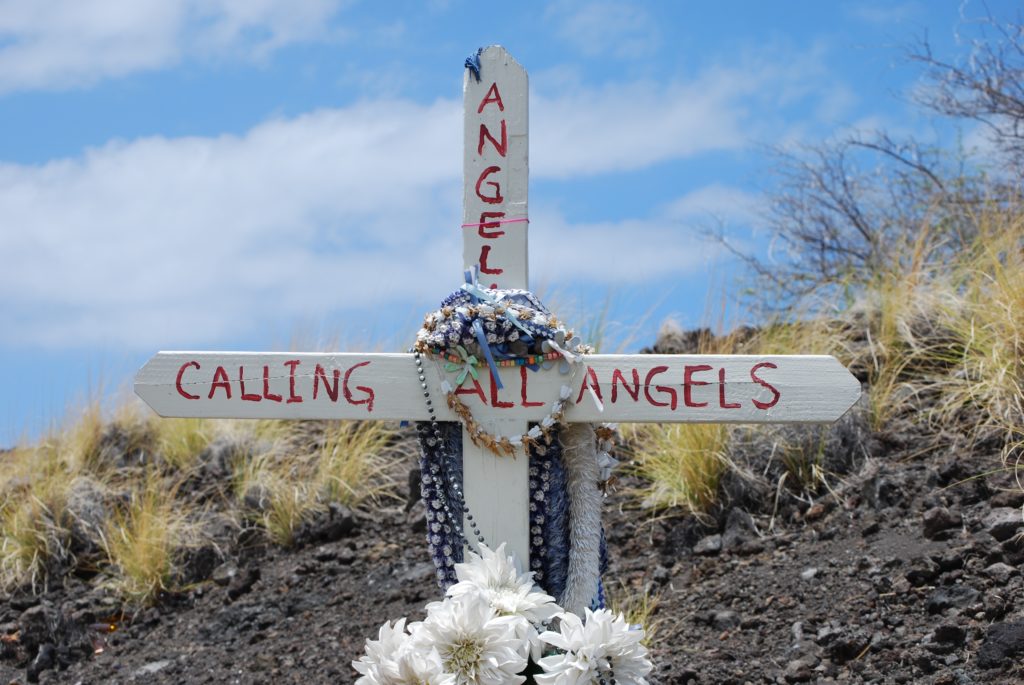
The Christian cross bears substantial representational weight: It is sign, symbol, and narrative cue. It is image that looks like text; it is three-dimensional object that occupies space. It uses scale and elevation as features of its message. It can be posted or carried.
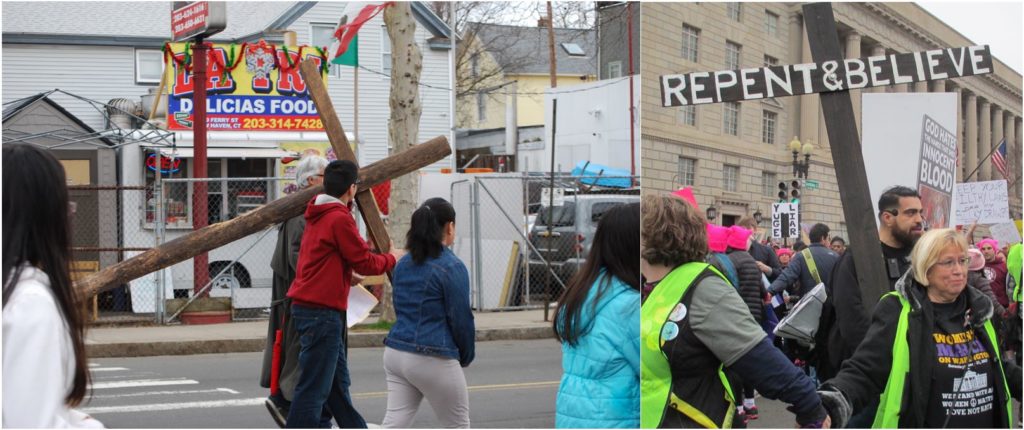
It would be inaccurate to assert that the cross is everywhere; but it is fair to say that we rarely transport ourselves by foot or vehicle, into or through the shared spaces of American life without encountering, in every such venture, at least one cross (and often many): on steeple or church facade, as roadside memorial, worn by persons as pendant or necklace, printed on billboard, on bumper sticker or automobile decal, on public and private land, in densely populated places and “in the middle of nowhere.” Some who erect these crosses believe that sight alone can induce conversion.

In American space the cross advocates for its own inevitability.1I take this phrasing from art historian R. Tess Korobkin’s formulation in a panel discussion on Confederate monuments, delivered on October 4, 2017 at Yale University. Whiteness is frequently part of these claims to inevitability. Note, for example, that public crosses are most often also white crosses. The cross has attained the luxury of license granted to things we can afford not to notice. As far as I am aware, no other religious group in the United States has such an easily replicated and widely understood figure of display. Display, in content and genealogy, is precisely the point, insisting as it does on American religion’s companionship and comportment with commerce—and, equally compelling, commercial advertising’s debts to American Protestantism.
When I began studying public display almost two decades ago, R. Stephen Warner’s proposal for religion as a “social space for cultural pluralism” was foremost on my mind. Post-1965 in any event, the public display of religion in the United States makes cultural pluralism visible, openly articulating a present multiplicity of traditions on and in the land. Certainly this is an important part of what the public display of religion accomplishes—but it does so within the politics of an aesthetic that sets the parameters of expectation, recognition, and permissibility for perceiving American religion.2R. Stephen Warner, “Work In Progress Toward a New Paradigm for the Sociological Study of Religion in the United States,” American Journal of Sociology 98 (March): pp. 1044-1093. It does so within public spaces designed to accommodate some publics more than others and to render some kinds of public engagement unlikely. This material articulation of religion is channeled and mediated by its form as display.
Display in the United States, and public display in particular, is especially hospitable to certain forms of religious experience and expression. The public display of religion facilitates the sensory dominance of Christianity precisely because Christianity’s mandate to evangelize (testify, witness, proclaim, convert) perfectly comports with the idiom of advertising—and thus the very terms of display. To state this thesis boldly: In the United States display is both an explicitly capitalist form and an explicitly Christian one. The fundamental historical role of American Protestantism in producing early commercial forms of display makes this a mutually constitutive enterprise.3In addition to the weight exerted by Protestant Christianity’s intimate and familial involvements with advertising, a host of other factors contributed to Christianity’s mostly inadvertent “material establishment.” Settlement patterns, zoning practices and property laws and judicial inclinations, preservation and the heritage industry, facility with particular aesthetics and symbolic systems, American religious and legal histories of literacy, and other national historical serendipities and conjunctions number prominently among these. The idea of material establishment offers one tool for elucidating the state’s role in producing religious “others.” See Sally M. Promey, “Material Establishment and Public Display,” Mediation, in Conversations: An Online Journal of the Center for the Study of Material and Visual Cultures of Religion (2016) This was not a momentary union of opposites but a collaboration of likeminded souls, professionals in two vocations, whose identities in each circumstance were capitalist and Christian. Religion helped produce the idiom of promotional advertising and religion has had to contend with that idiom.
Public displays do not simply happen; they are shaped and constructed over time in a manner that materializes cultural values, economies, and power. Twentieth-century technologies like the car, its system of roadways and highways, and the mechanisms of display instantiated by these are instrumental to this American religious and commercial calculus. Space, in this context, is never just about real estate or cartographic location but also about claims on the imaginary of American religions.
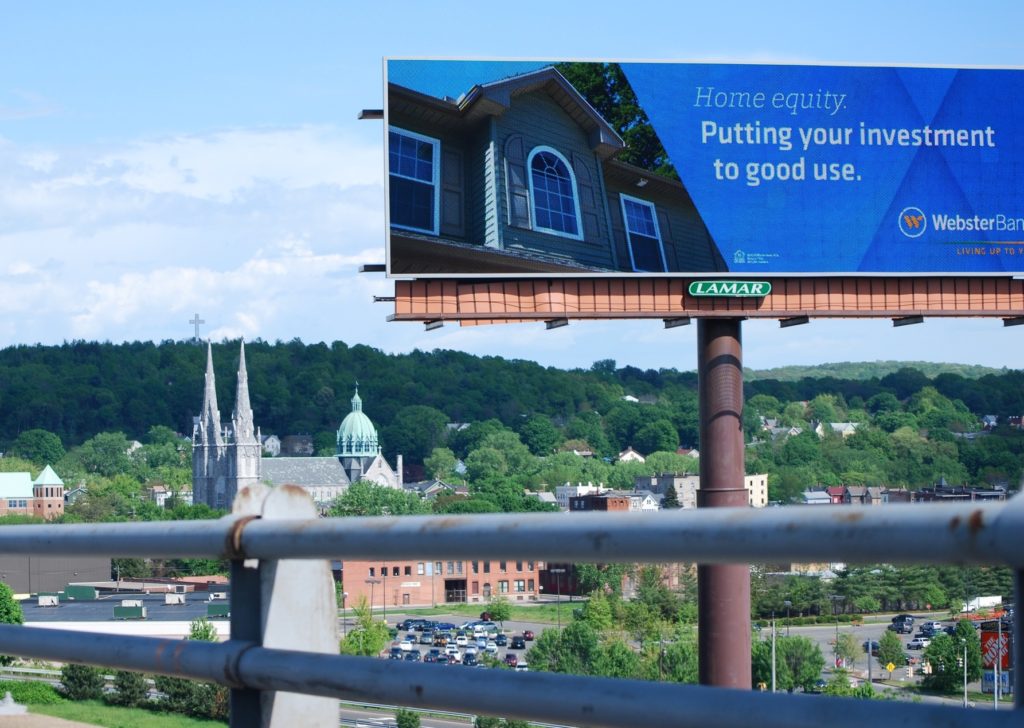
The cross is a sign in more ways than one. In the United States in the twentieth and twenty-first centuries, signage is a key social, cultural, and commercial form. Signage facilitates the occupation of public (and private) spaces by words and images.4In this capacity, the cross also banks on its own colonial and imperial pasts. Among other things, we read signage to orient ourselves in the world. We expect and depend upon certain cues, certain sorts of information to help us get our geographical and ideological bearings. Signage in many scales is a prominent feature of the everyday spatial constructions of American modernity.5David Delaney notes that modern territory is newly subject to amplified textual representation and marking.
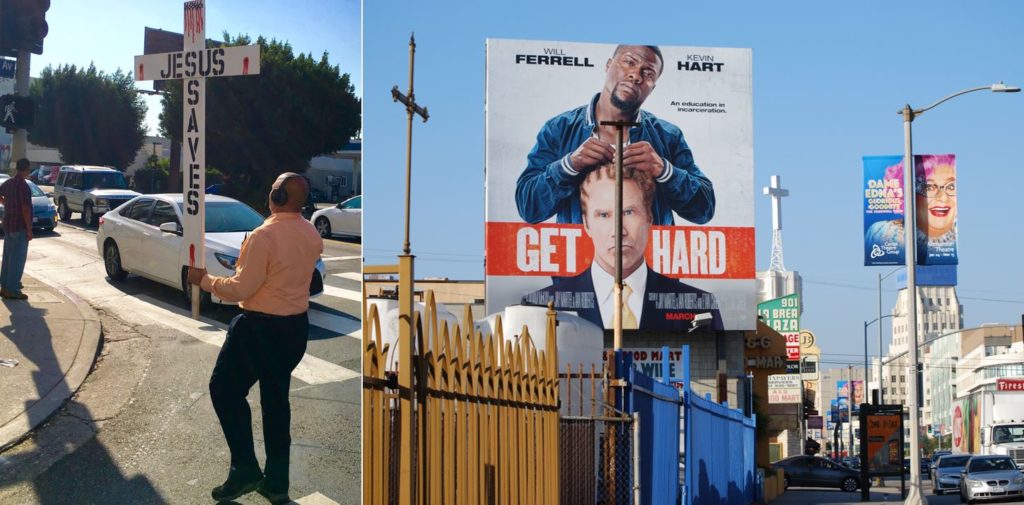
While not all public display of religion includes signage, much of it does so. Signage testifies to religion’s incorporation in culture, territory, and commerce. It offers an opportunity to secure civic and national traction and standing that Christian church advertisers have long mobilized to their advantage.
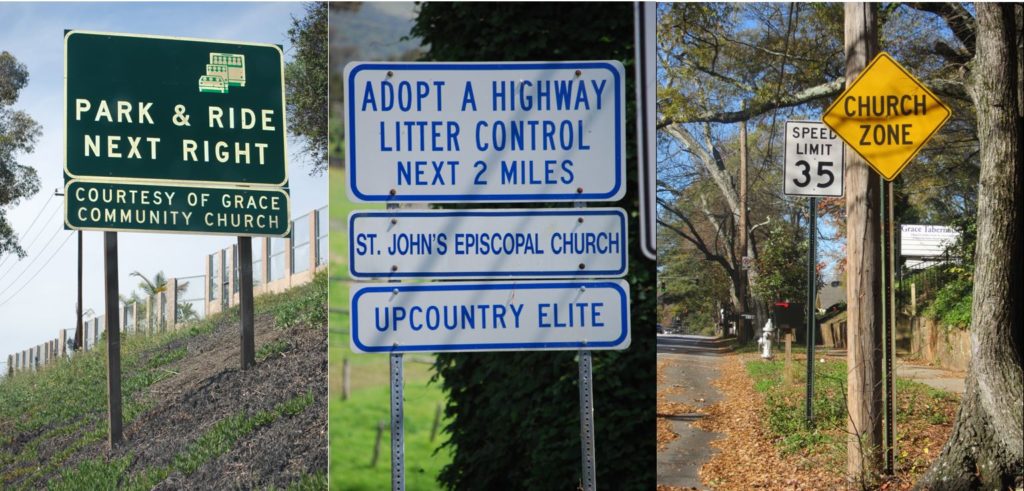
It is difficult to imagine any other American religious tradition making similar claims on the land with anything like this frequency and magnitude, though many have made forays in this direction. The decisive distinction here is that the testimonial voice, the promotional voice, is most fundamentally Christianity’s, and especially its evangelical Protestant forms.


In signage of various sorts, American religion establishes its integrated, comingled presence at town borders and property, in strip malls and office parks, in urban storefronts and rural fields. That typography is a form perfectly suited to Protestantism underscores this Christian advantage. Typography facilitates decoration and display with words. Words are important because intelligible testimony (beyond the logo of the Latin cross, “alphabetized” by some as a lowercase “t”), like American citizenship, requires literate assertion.
I look now, in some detail, at one particular cross, in its particular hyper-testimonial context.
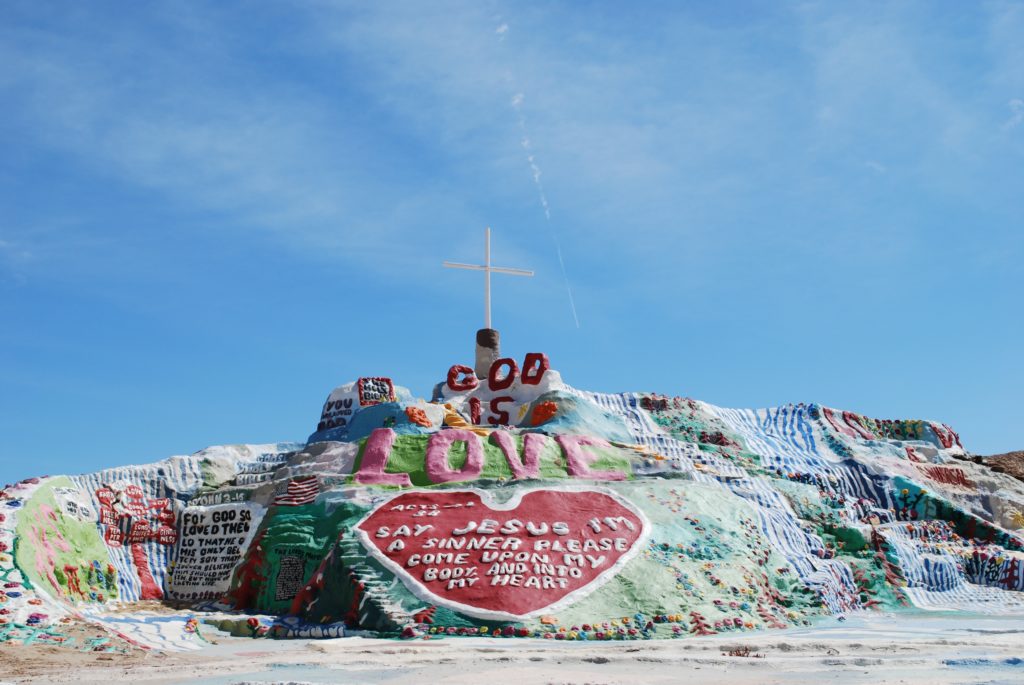
Salvation Mountain is visible from about a mile away, situated on very low-density public land, approached along a two-lane desert roadway, three miles out from Niland, California, near one boundary of Slab City, a self-designated squatter settlement, “the last free place in America.”6Erik Eckholm, “New Hassles for the Free Spirits of Slab City,” New York Times, 12 March 2015, A14. California state constituencies had little use for the site when the federal government ceded it back to them in the early 1960s after the Marine Corps abandoned its 1940s military training base there. Slab City takes its name from the old foundations of the base, concrete slabs on the desert sand, that now provide patios and extra living spaces for the trailers, RVs, and other vehicles in which “Slabbers” live.
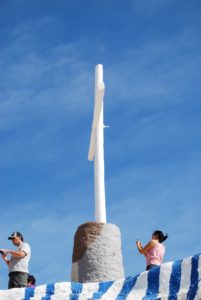
The “mountain” is a three-story-high adobe mound, constructed of local clay and straw and lead-free house paint, built out and up from a desert hillside in an otherwise flat expanse. Its most obvious features—its fifty-foot elevation, the bright white cross at the summit, the rainbow riot of colors in its sandy almost monochrome landscape, the giant dimensional text spelling out “GOD IS LOVE,” and the huge red heart with testimonial inscription—compel from a distance. Its creative idiosyncrasies (in location, scale, artist’s biography, and media) have earned it widespread attention. I look here at Salvation Mountain because, despite apparent aberrations, it fully incorporates the commercial aesthetics of American belief that I describe; and it intersects with the public rubrics of advertising, tourism, entertainment, patriotism, protestantism, and automobility.7 Winnifred Sullivan’s lowercase “protestantism” is helpful here.
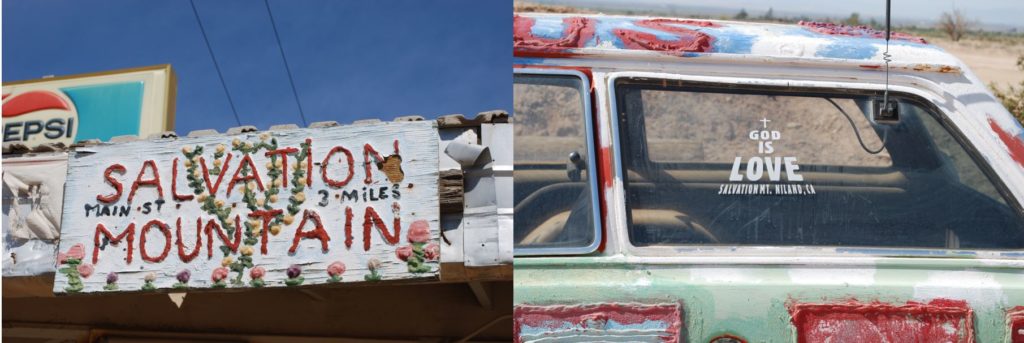
Leonard Knight (1931-2014) was an Army veteran, vehicle mechanic, and auto-body specialist. He moved to the desert in 1984 and soon began making Salvation Mountain to advertise his Christian conversion and the love of God. In a very real sense, the mountain materializes and spatializes his testimony and the content of his own personal transformation.
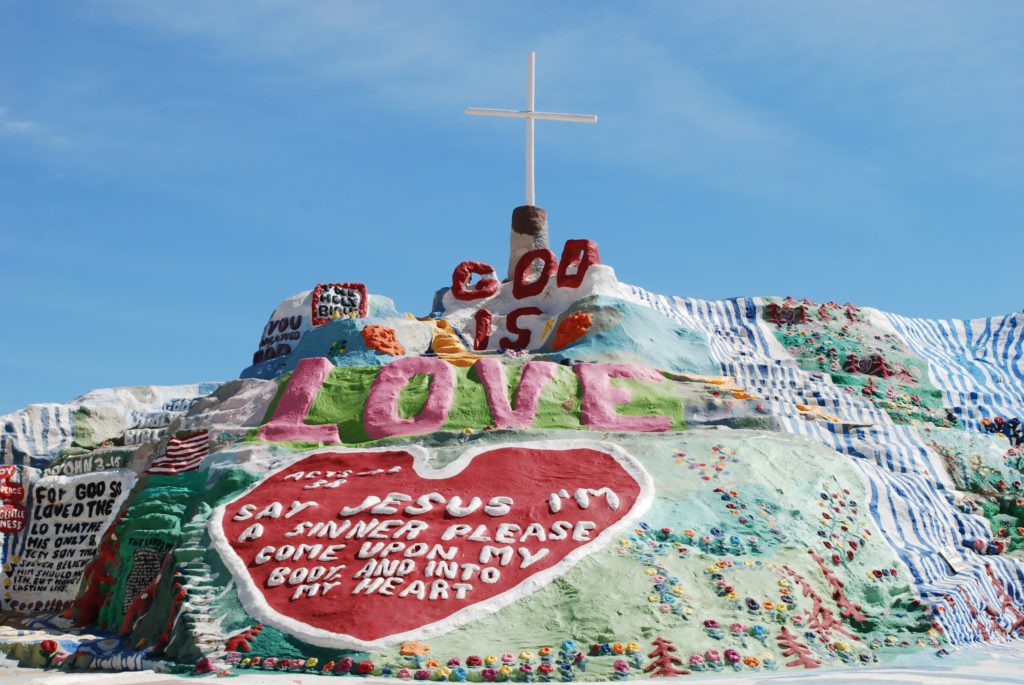
Below the cross that connects mountain to desert sky, at the literal heart of the mountain Knight wrote out (and then repeated elsewhere in his decoration) the “Sinner’s Prayer” in the verbal form he prayed it at his own 1967 conversion.8The “Sinner’s Prayer” is an evangelical Christian formation of repentance and conversion. The prayer has no single set of required words. Knight’s version is his own and is a variant that stresses human embodiment and incarnation, adding “please come upon my body” to the more common “into my heart.” An image of the American flag joins letters spelling out “God’s Holy Bible,” “John 3:16,” “Love is Universal,” “The Lord’s Prayer,” “You are Loved by God,” and so on. The site design and set of pathways pulls visitors up to the cross with its expansive views of the surrounding desert and elevated perspective back downward on the entirety of Knight’s artwork—and then around the adjacent decorated vehicles and into the subsidiary shelters. Knight lived in one of the trucks on the property.
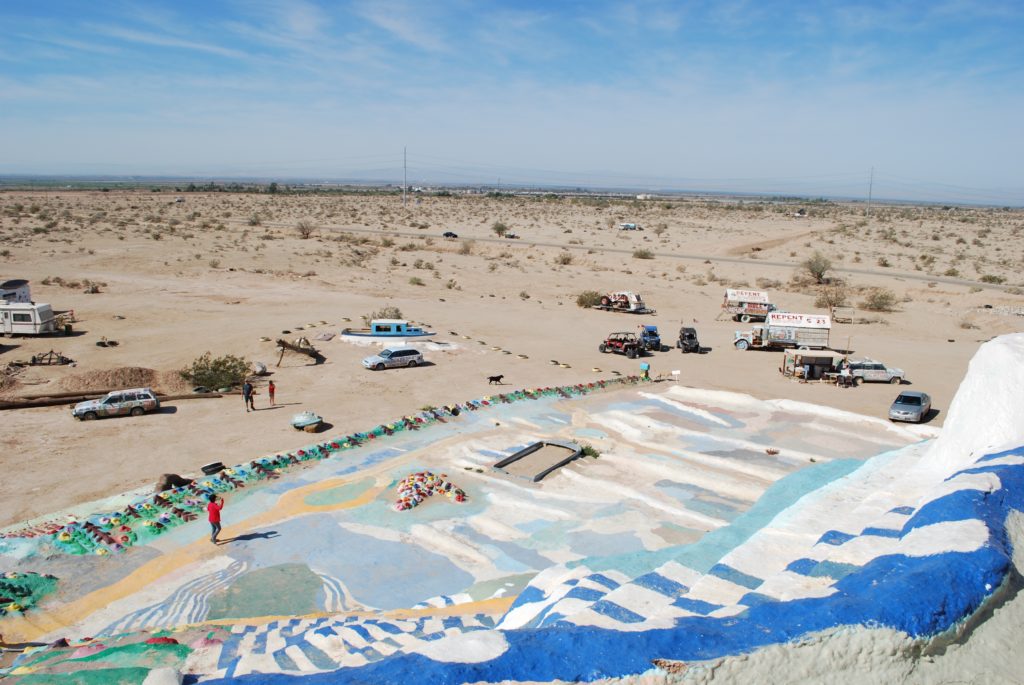
The site invites and directs reflective, meandering movement, exploration, and bodily engagement. It elicits wonder at the sheer audacity of hand-making a three-story technicolor mountain in the desert. Knight took great satisfaction in the attention directed to his Christian witness in this place. This was all one massive work of testimonial art, including, within the site itself, a shrine to the mountain, its celebrity, and its testimonial success.
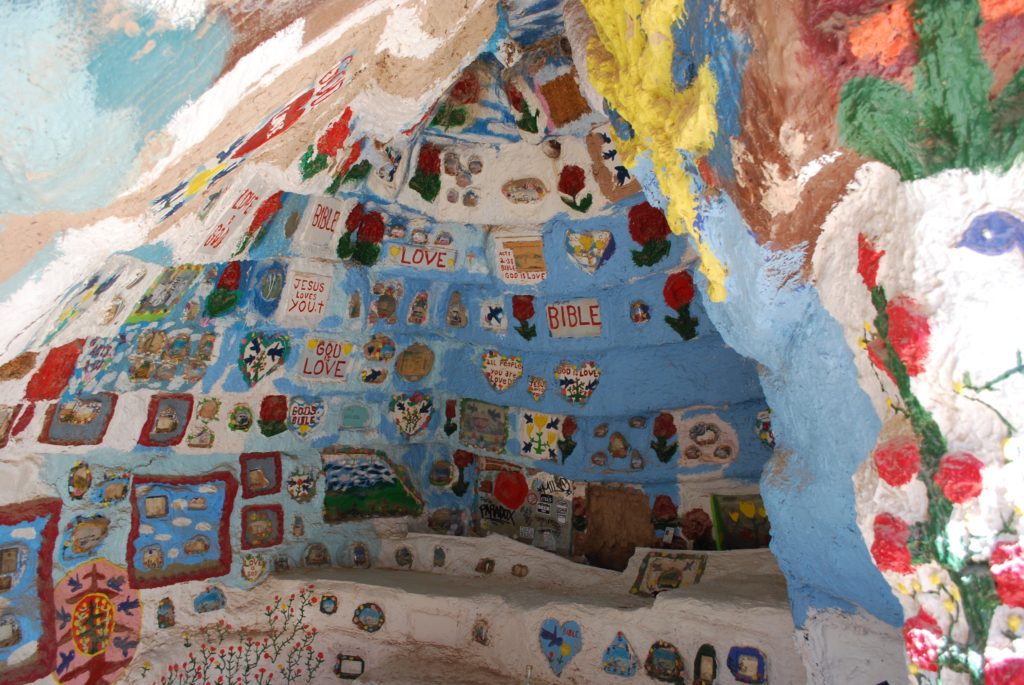
In their narration of the site, Knight, his immediate supporters, and his interpreters included its status as “folk art” and “outsider art.” Knight exhibited the 2001 certificate from the Folk Art Society of America, formally recognizing Salvation Mountain as a “National Folk Art Site, Worthy of Protection and Preservation.” A year and a half later California senator Barbara Boxer officially agreed with this assessment. On May 15, 2002 in the United States congressional record, Boxer lauded Salvation Mountain as a “national treasure.”9 Some of the Knight biographical information included in the congressional record is inaccurate.
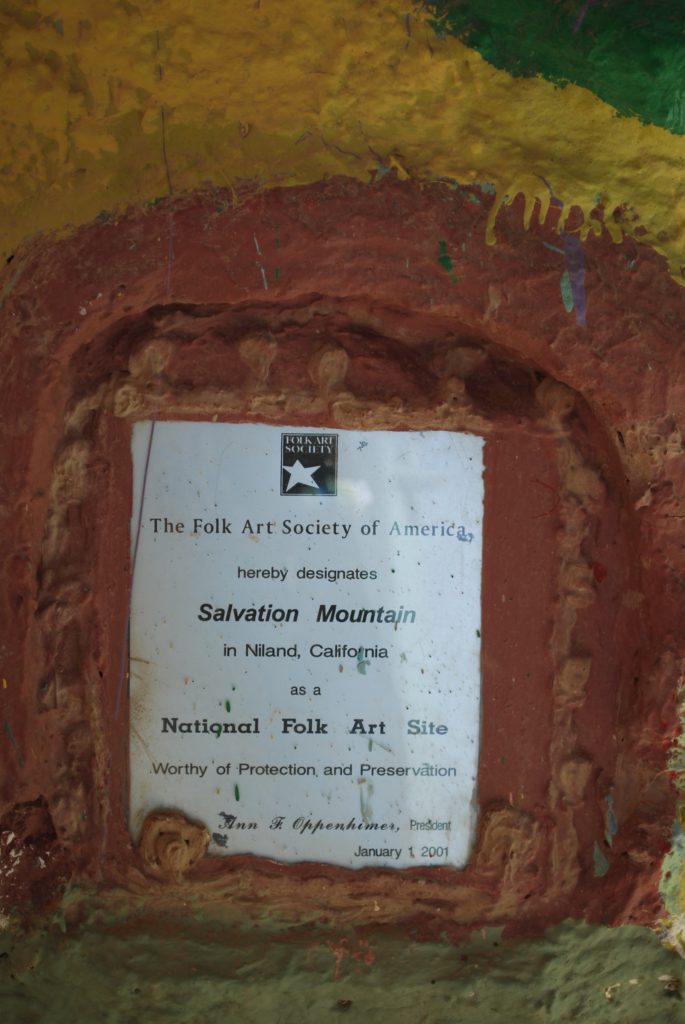
Labeling Knight’s mountain as outsider and folk throws the lasso of secularity around it. The labels produce a secular frame for the site’s religiosity. They tame its specific Christian belief but they also create highly structured modern space for it. The “safety” provided by this categorical sort of aestheticization is nowhere near as airtight as often presumed. The impact of this strategy of categorization differs for different audiences. It is “other” enough, from the perspective of those for whom the distancing category anchors secure spectatorship, to be scrutinized with minimal if any discomfort, to be celebrated without succumbing to its testimony. It is simultaneously familiar enough to be embraced by Christian visitors as a version of their own tradition. There is considerable unattended slippage between the two imagined subject positions, facilitating, among other things, affective consumption of the site for its more diffuse spiritualities, and as exemplary of the distinct set of virtues it aims to instantiate (simplicity, persistence, dedication) and proclaim (divine love).
From the perspective of the theory of secularization that shaped these categories, folk and outsider function here as synonyms for quaint or old-time. They also invoke the “primitive,” “backward,” and “timeless” or unchanging. Rendering religion “past,” it can be safely quarantined, repurposed, and presumed to be incapable of infecting present beholders in its original capacity; it is now more art or artifactual curiosity than it is religion.
To be folk or outsider, however, is also about nation formation, about national vernaculars.10For a persuasive recent discussion of related subjects, see Marci Kwon, “Vernacular Modernism: Joseph Cornell and the Culture of Populism,” PhD dissertation, Institute of Fine Arts, NYU, 2016. Salvation Mountain, as contemporary “national treasure,” contributes to and takes its place among the vast reservoir of public monuments and artifacts that secure Christianity’s current hold on American old-time religion, on American heritage, on American nationhood. These categories appear to allow religion to be submerged and suppressed within them, but in actuality this contributes to Christian normativity.
Simultaneously, outsider art suggests that there is also an opposite that is “inside.” In the largest sense, the repository for what constitutes American insider art (modern and contemporary fine art) has failed to fully integrate and sustain religion, instead maintaining relations of real ambivalence. Of interest from this perspective, advertising, like outsider or folk art, has also often been posited as fine art’s opposite or other, a distinction advertising has been eager to dismantle.
Folk and outsider designations variously elicit, frame, and cordon off not just religion but other things too. Folk and outsider constitute America’s very own (Christian) primitive. Dynamics of class, race, and gender fuel these hierarchical energies. Salvation Mountain’s location on the edge of Slab City underscores the genre’s articulation and reification of economic distinctions. Folk and outsider art in the United States rationalize, and ultimately monetize, non-elite artistic practices, including the creative production of working class individuals, of racialized others, and of the devoutly religious. Outsider art and folk art are safe places to park religion. Folk art and outsider art are nonetheless fully articulate in the aesthetic syntax of celebrity and publicity necessary to prop up reigning definitions of modernity.
In sum, incentive to public display is built into the sensory discursive categories and identity politics of American Christianity. Other religions adapt but display is a phenomenon especially suited to practices of testimony, witness, proclamation, and conversion. Not only does display, in its American contexts, thus privilege the sensory cultures of Christianities, but Christianities have shaped the very terms of American display, validating and naturalizing a testimonial aesthetic. This goes far beyond crosses, of course: Neither crosses nor Christianity is all there is. Still, these claims on the idiom of commerce and an efficient, recognizable, and replicable advertising logo facilitate Christianity’s capital traction in the United States.
* * *
This essay condenses a number of arguments from my current book manuscript: “Religion in Plain View: Public Aesthetics of American Belief.”
All photos taken by the author, unless otherwise noted.












